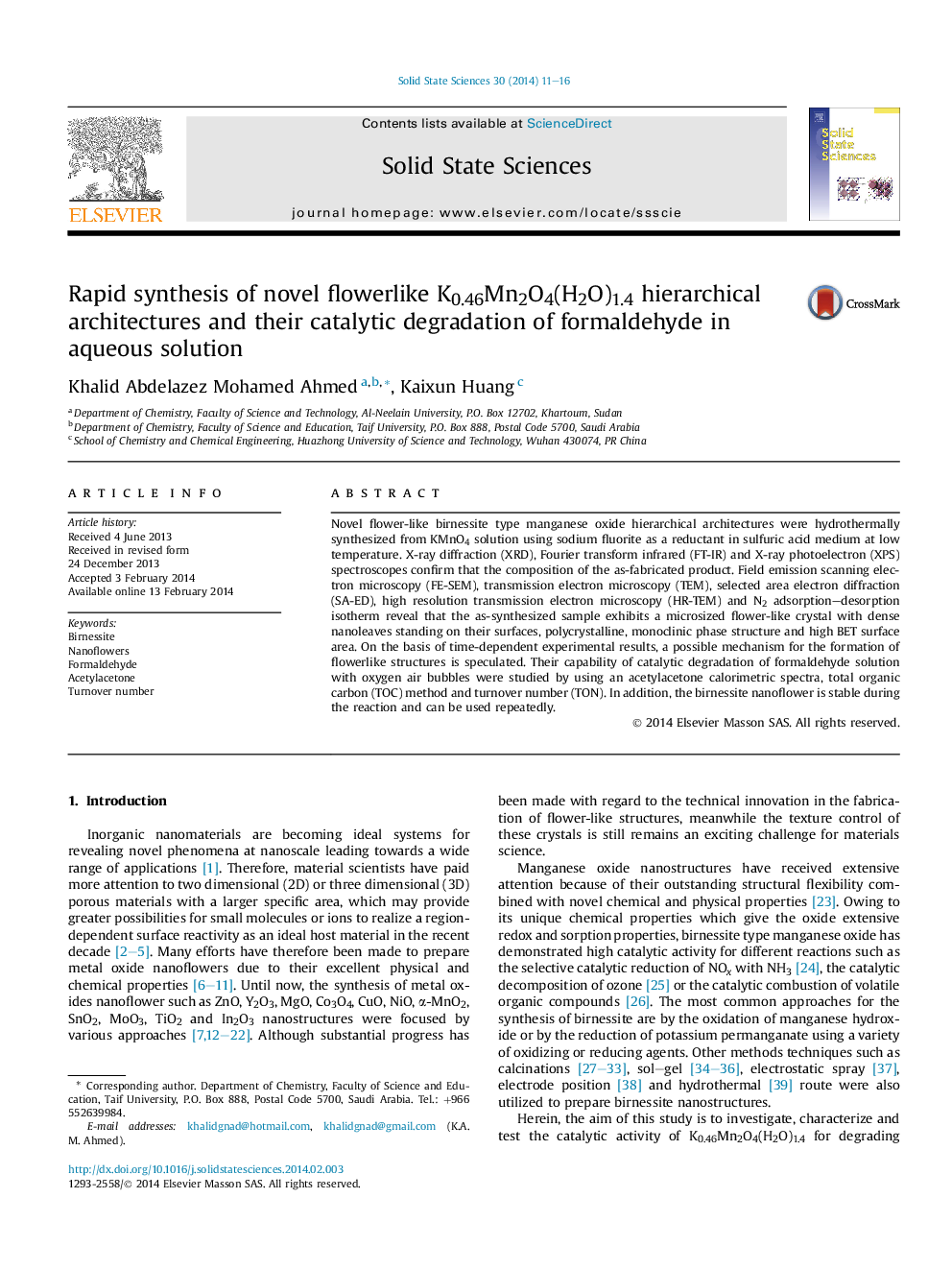| Article ID | Journal | Published Year | Pages | File Type |
|---|---|---|---|---|
| 1504446 | Solid State Sciences | 2014 | 6 Pages |
•One-pot hydrothermal method was used to prepare flowerlike of K0.46Mn2O4(H2O)1.4 structures.•The effect reaction time-on the formation of flowerlike structures was investigated.•A growth mechanism of K0.46Mn2O4(H2O)1.4 nanoflowers was proposed.•Flowerlike K0.46Mn2O4(H2O)1.4 exhibits high performance for catalytic degradation of formaldehyde.
Novel flower-like birnessite type manganese oxide hierarchical architectures were hydrothermally synthesized from KMnO4 solution using sodium fluorite as a reductant in sulfuric acid medium at low temperature. X-ray diffraction (XRD), Fourier transform infrared (FT-IR) and X-ray photoelectron (XPS) spectroscopes confirm that the composition of the as-fabricated product. Field emission scanning electron microscopy (FE-SEM), transmission electron microscopy (TEM), selected area electron diffraction (SA-ED), high resolution transmission electron microscopy (HR-TEM) and N2 adsorption–desorption isotherm reveal that the as-synthesized sample exhibits a microsized flower-like crystal with dense nanoleaves standing on their surfaces, polycrystalline, monoclinic phase structure and high BET surface area. On the basis of time-dependent experimental results, a possible mechanism for the formation of flowerlike structures is speculated. Their capability of catalytic degradation of formaldehyde solution with oxygen air bubbles were studied by using an acetylacetone calorimetric spectra, total organic carbon (TOC) method and turnover number (TON). In addition, the birnessite nanoflower is stable during the reaction and can be used repeatedly.
Graphical abstractFigure optionsDownload full-size imageDownload as PowerPoint slide
